2022 Fiat 500e Icon review
Words: Peter Louisson | Photos: Isaac Western
The Cinquecento seems to have nine lives, returning for the 2020s with battery power. We sample the first to arrive here.
Over the years, we’ve encountered quite a few Fiat 500s in petrol (meek, except the Abarth) and turbodiesel variants, and now the 500 has made another transformation, being the first Fiat to go fully electric. It’s a wee ripper too, with the emphasis on wee.

The 500 still looks like it used to – why change a winning formula? – only now it’s slightly bigger, still a three-door mind you – and there’s decent room up front, though not so much in the rear, maybe reserved for small compliant friends who need a lift home.
We like the new round headlights with what look like eyebrows above, making it seem like an escapee from a Cars movie.
The background
The 500 or Cinquecento is 65 years old, and seems as popular as ever. It may be the car that has the most nicknames of any, initially known as Topolino (small mouse) and Bambino/Bambina with most affectionately taking female names, like Fifi or Bella.
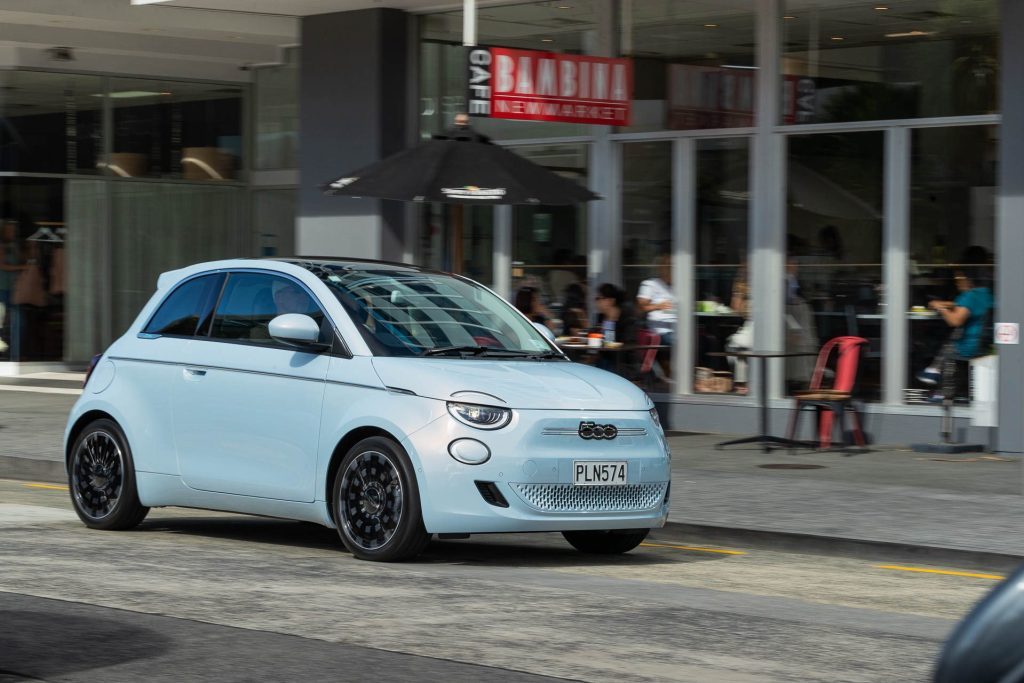
The latest variant is sans a tailpipe, is all-new and is proving popular in Europe, last year duking it out with Tesla Model 3 and Y as the most popular battery electric vehicle in the EU.
The electric model now accounts for nearly half of 500 sales globally, and has been a success story for a brand that has been quiescent in our neck of the woods. Expect that to change as Fiat goes entirely electric from next year onwards.
Yet back in 2019, an electric 500 was scarcely on Fiat’s radar. Back then owner FCA decided to spend $800m to develop the 500e. Look closely at the second zero and it has a blue ‘e’ incorporated within. Clever, what?

Part of the investment was a new skateboard-style platform that this car alone uses. Whether or not it shifts to the Stellantis CMP architecture at some point in the future is unclear.
Up front is an 87kW/220Nm electric motor that drives the front wheels, so there’s no frunk. It is said to propel the 1365kg city car to 50km/h in three seconds and it certainly does feel hasty.

What’s on offer?
There are two spec variants, Pop and Icon, both with the same powertrain. Each has a 42kWh battery pack, 37.3kWh of which are usable, endowing it with a WLTP range of 320km. As is the usual case, when we hopped in the distance to empty read just 260km, meaning the previous drivers had been giving the little 500 an ‘evaluation test’.
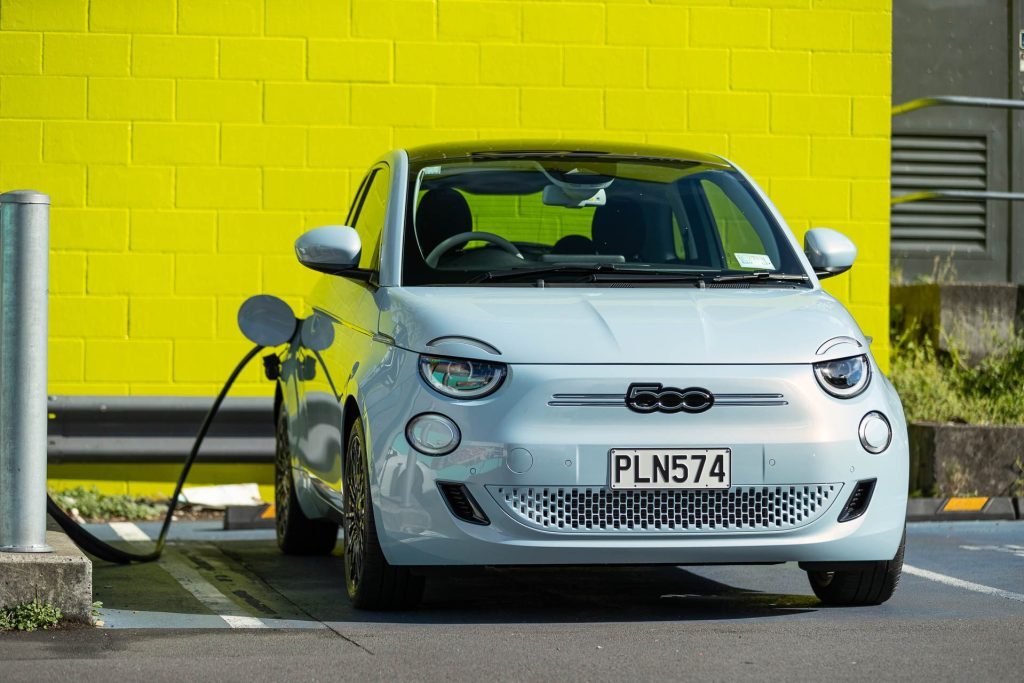
A zero to 80 per cent battery reboot takes 35min on an 85kW fast charger apparently. It uses power at a rate of around 15kWh/100km, giving a ‘real world’ range of around 250km on the open road, or circa 300 in town.
Fiat isn’t just stopping with these two models either because towards the end of this year the Abarth 500 will arrive, packing rather more power (114kW), though little more torque (235Nm). But it is still sufficient to subtract two seconds from the sprint time.
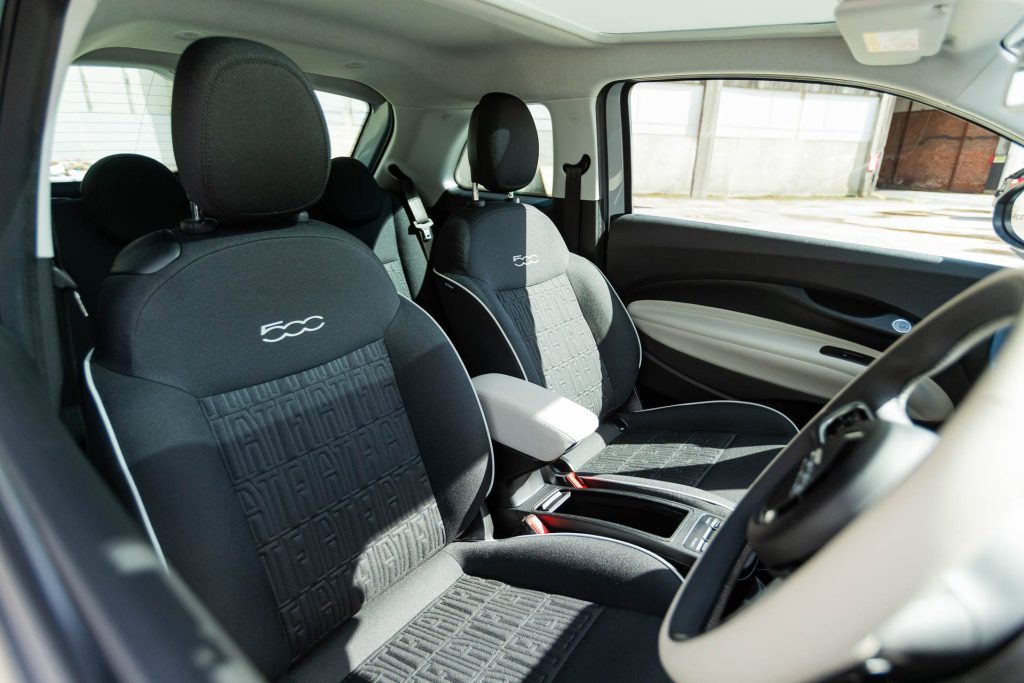
It will also have a longer specification sheet, running to the likes of vegan leather upholstery for the sports seats, larger 18-inch rims, and a sound generator. This is said to be a digitally synthesised rendering of the outgoing Abarth’s petrol engine. Weird stuff. Handily, it can be turned off.
There’s no pricing available for the Abarth model as yet but the 500 Pop kicks off at $59,990 (plus on roads), while the Icon that you see here costs $64,990, and so both are eligible for the $8625 government rebate (while it lasts).

What do they get then?
The 500 Pop is the entry point and it comes with AEB, traffic sign recognition, fatigue detection, lane keeping, heated seats, keyless locking, reversing sensors, a cable for public charging (no home/emergency charger included) and a rear view camera.

Inside are a body-coloured dash, wireless Apple CarPlay and Android Auto, a 10.25-inch infotainment system, a seven-inch TFT display and wireless charging.
Colours include Rose Gold, and shades of green, grey, white and black while the car you see here is finished in Celestial Blue, a pearlescent finish.

This is the $65k Icon model, which adds a fixed glass roof with manual screen beneath, eco-leather trim including two-tone wheel, and premium dashboard accents that remind of a handbag finish. On the exterior are chrome accents, LED headlights and 17-inch alloys.
Enhancing safety aspects are 360 parking sensors, blind spot monitoring, adaptive cruise with lane centring and traffic jam assist. It carries a four-star ANCAP rating.

What’s it like?
The 500 is produced at the original Mirafiori factory in Turin, and is more sophisticated than ever, though with a few quirks. We like the up-to-date seven-inch TFT full digital cluster. Resolution is great and only the most relevant aspects are revealed in the main screen.

There’s no gear lever and instead a row of buttons for gear selection. A stop/start push button is sited to the left of the steering column while the HVAC system is controlled by piano black pushbuttons, though these aren’t that easy to read.
The new electric 500 has four-way steering column adjustment and the Icon features height lift for the driver’s seat. There’s no lumbar adjustment but the driving position is good and so too access via the big doors.
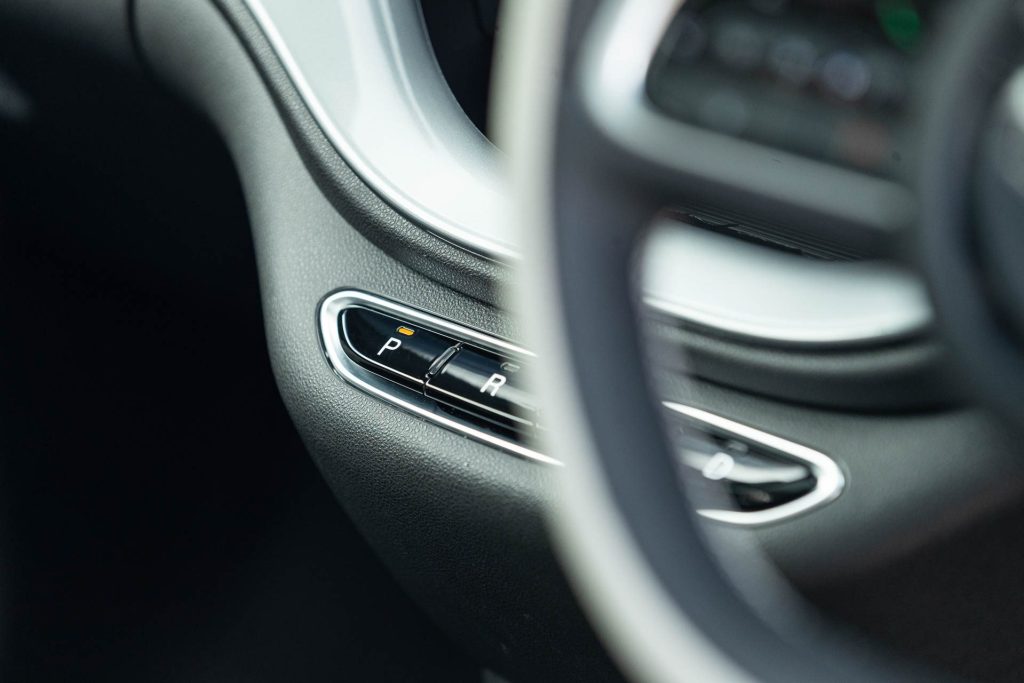
There are two exit latches, one an electronic pushbutton up high, the other a hard-to-reach mechanical lever down low, presumably the fail safe option. Locking is by key or pushbutton but there’s no audible lock cue, only a light flash.
Visibility out the left rear isn’t wonderful but in all other directions it’s really good. Being short in length and tall in height helps in this regard. And on that, it is roughly 50mm bigger in each dimension than its predecessor, but at 3632mm long it is still teensy.

That means the back seats aren’t good for anything other than kids or mutts. There might be enough room for a great dane back there, but certainly not standing for the glass roof doesn’t open.
The backs of the rear seats are metal lined, so when split folded they form a metal floor for whatever goods you’re transporting (up to 550L). While luggage space is only 185L and the third door is rather heavier than ideal, this is probably enough space given Fifi is likely to be owned more by singletons than couples.

How’s it drive?
It’s more fun than I expected, actually a hoot. As a bonus, it seems to make other people happy too; they recognise it as something different from previous 500s. But not too different.
There are three drive modes, with the oddly named Sherpa being essentially the go-slow eco mode, guiding you home, as it were. Top speed of the Sherpa mode is 80km/h and it nixes the AC but it works fine in town.

That said, we mainly used ‘Range’ in the ‘burbs, enabling single-pedal driving and decent performance. ‘Normal’ is the setting most Italians and Kiwis will likely use much of the time. There’s full power on tap whenever you like, and coasting as well, with just a bit of regen after a throttle lift.
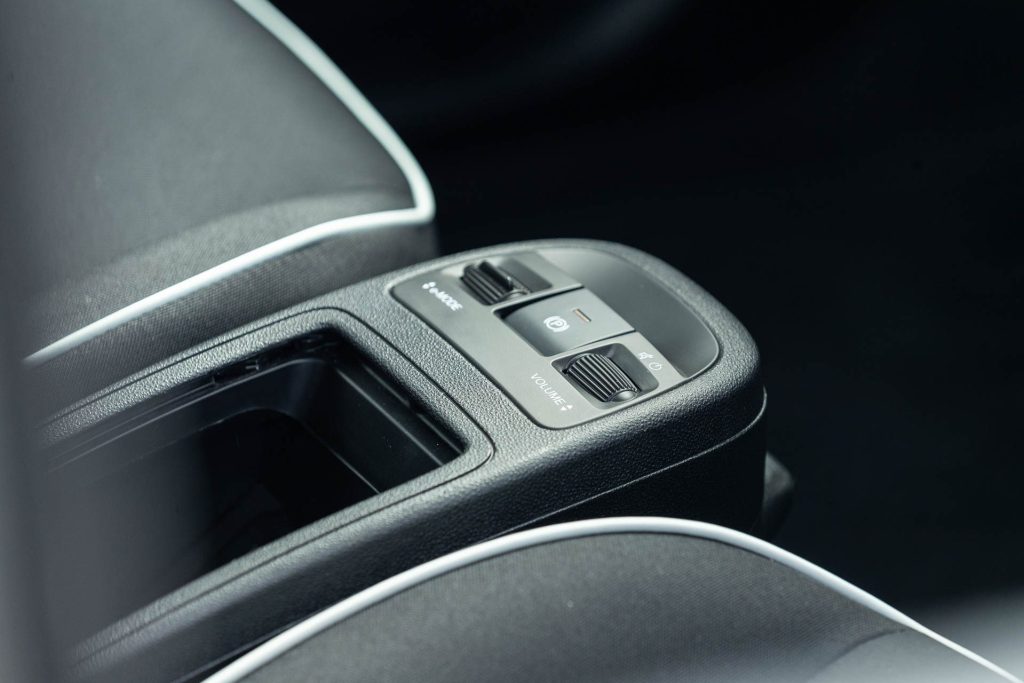
Scrolling between the three modes with the battery near to full, we saw figures of 240km remaining in Normal versus 275km left in Sherpa mode. Hooking up to a 50kW fast charger took approximately 20min to recharge the battery to full from 90 per cent.
What’s instantly obvious after getting underway in the new 500 is the level of powertrain refinement about town. You hear nearly nothing with the windows wound up and the AC on. Listen out and the EV whirring is apparent but overall this is pleasingly quiet, tyre roar only obvious over poor or new chip seal.

It’s pleasant inside too, despite the plethora of hard plastics; the dash is body coloured but it’s all done in a fancy designer way. Touch points are pleasant.
On the go, the steering is light, the turning circle tight at 9.7m, and the suspension firm, so with the compact wheelbase it can feel a little jumpy over town bumps. But as speeds rise the suspension eases somewhat, and it keeps things on the level when swinging through the bends.
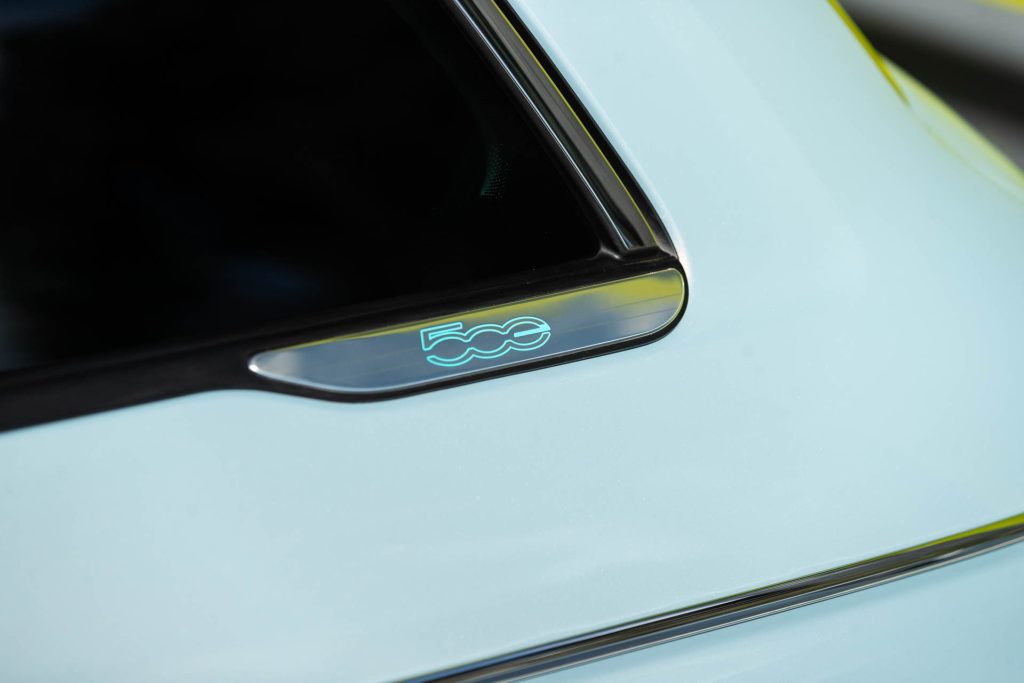
Out of town it’s a minor riot. The 500’s surprisingly quick – it comfortably gets to 100 inside of 9sec, and turns with enthusiasm, hanging on like crazy and is genuinely fun in twisty going, the steering more interactive after you’ve turned off all the lane keeping (button on the end of the left wand).
It took half a battery charge to cover 110km, all on the open road and using our new Chargemaster Portable EV unit, was back up to 100 per cent after an overnight charge.

Because the battery pack isn’t that big we imagine many owners will find this $500 portable charger sufficient, as you’ll have to buy something to charge it at home.
The new Fiat 500 has won several City Car of the Year awards, including from What Car? and style guide GC. This year it also took the gong for the Irish Car of the Year so is clearly popular.

It competes with the likes of Mini Electric which is slightly bigger and more expensive, without quite the range. There are certainly other EVs for a similar price that offer more space and range so if you need something bigger, this may not be for you.

But if the neo-retro style is up your alley, and the small size suits your city needs, the latest Fiat 500 with its cute looks and fun drive may well be quite the drawcard. It’s the best 500 I’ve driven.
| Model | Fiat 500e Icon |
| Price | $64,990 |
| Clean Car Discount | Rebate – $8,625 |
| Motor | 87kW/220Nm |
| Battery | 37.3kWh net |
| Range | 320km |
| Drivetrain | Single-speed auto, FWD |
| Energy Use | 15.6kWh/100km |
| C02 Output | 0g/km |
| 0-100km/h | 8.67sec |
| 80-120km/h | 6.33sec (180.9m) |
| 100-0km/h | 37.10m |
| Stability systems | ABS, ESP |
| Safety | AEB, ACC, BSM, LDW, ALK, AHB |
| Luggage capacity | 185-550L |
| Tow rating | Not rated to tow |
| Service intervals | TBC |
| Warranty | 3yrs /100,000km |
| ANCAP rating | 4 Stars |
| Weight | 1365kg |




